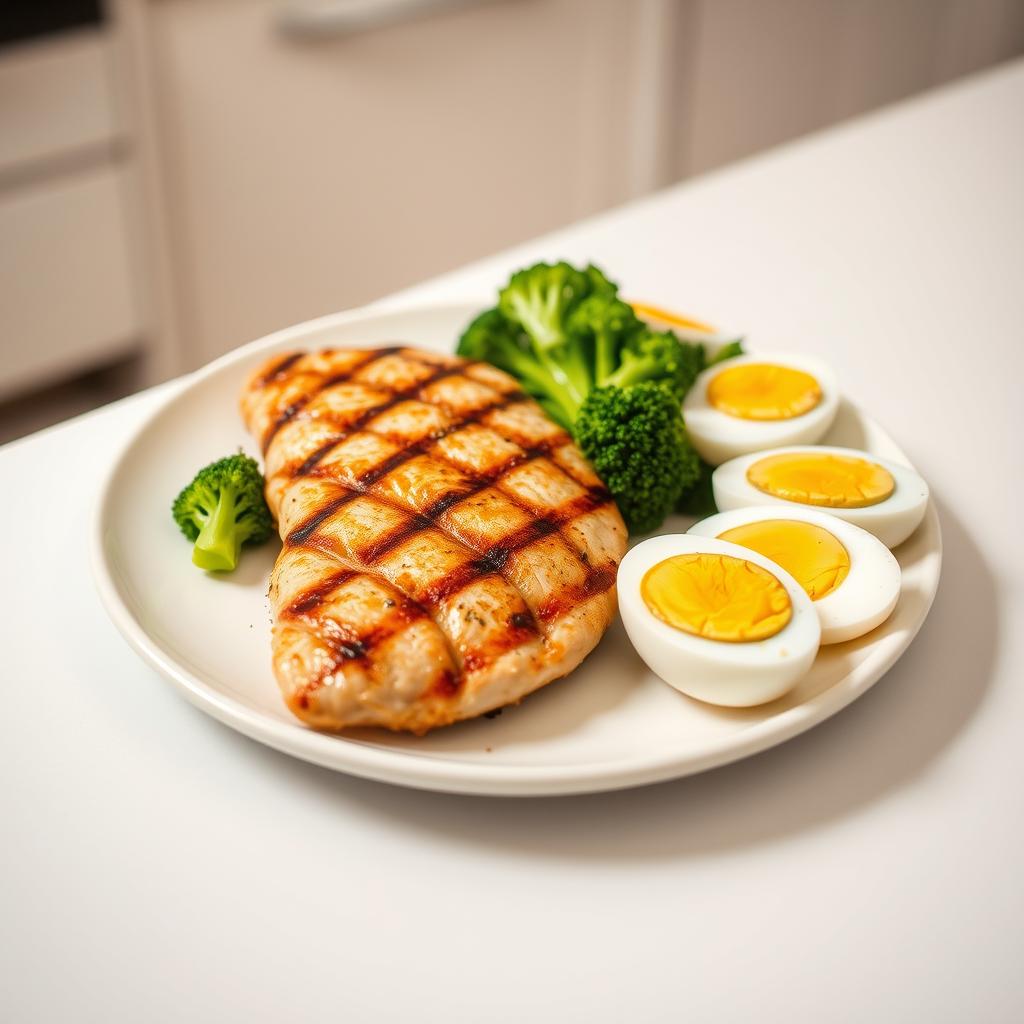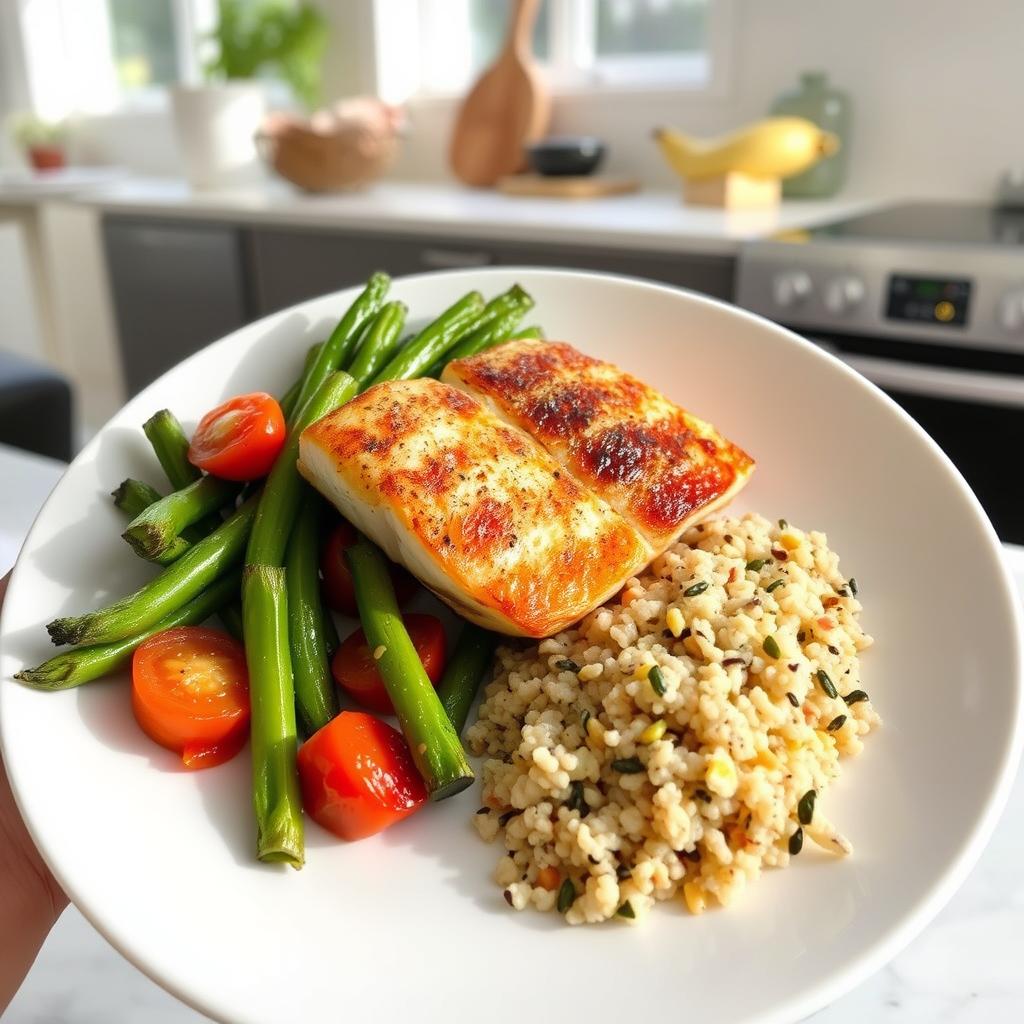Preparing for a PET scan often involves adjusting your diet, but have you ever considered how High Protein Fast Food can play a role? PET scans, particularly those using fluorodeoxyglucose (FDG), detect glucose uptake in the body to identify areas of abnormal activity. Since glucose levels can affect the accuracy of the scan, dietary preparation becomes essential. Choosing High Protein Fast Food options such as grilled chicken, bunless burgers, or egg based meals can help reduce carb intake while maintaining your energy. These choices support your body’s metabolic state and contribute to clearer, more effective scan results.
The foundation of dietary guidelines for PET scans is a high protein, low carb approach. Why does this matter so much? Carbohydrates, particularly sugary and starchy foods, increase glucose levels in your body. This glucose competes with the FDG tracer, potentially obscuring critical diagnostic details. By switching to protein rich foods, you help your body maintain stable glucose levels. This ensures the tracer is absorbed more effectively in target areas, leading to clearer imaging.
Here’s what this diet typically looks like:
- Lean proteins: Opt for chicken, turkey, fish, or eggs.
- Non starchy veggies: Think spinach, broccoli, and zucchini.
- Avoid carbs: Skip bread, pasta, rice, potatoes, and sugary snacks.
- Exclude alcohol: Alcohol can interfere with imaging results.
By following these dietary guidelines and fasting as advised (usually for about four hours), you can set the stage for a successful scan. Remember this preparation isn’t just about following rules; it’s about ensuring the most accurate diagnostic outcomes to support your health journey.
Understanding PET Scans and Dietary Requirements

Why does your dietary preparation matter so much? Let’s break it down:
- Glucose Control: By limiting carbohydrate and sugar intake, you reduce the body’s glucose levels, helping FDG focus on areas of medical interest.
- Optimized Imaging: High protein meals such as chicken, fish, eggs, or tofu ensure your body functions efficiently without excess glucose uptake interfering with results.
- Minimal Distractions: A low carb, high protein diet keeps non target tissues, like muscles, from “competing” for FDG uptake.
Another key aspect is fasting (usually 4 to 6 hours before the scan). This step clears remaining glucose from your system and primes your body for accurate imaging. By following these dietary guidelines, you’re not just prepping for a medical procedure you’re actively improving the chances of pinpointing vital diagnostic insights. So, next time you prepare for a PET scan, remember: what you eat matters more than you think.
Core Components of the High Protein Diet Plan
Recommended Protein Rich Foods
In a High Protein Diet Plan for PET Scan, protein serves as the foundation, and there are plenty of delicious, nutrient rich options to choose from. Lean meats such as chicken and turkey are top choices, providing quality protein without excess fat. Fish like salmon and tuna not only supply protein but also offer healthy fats that support overall wellness. For those following a plant based lifestyle, tofu and tempeh are excellent high protein alternatives that fit seamlessly into the diet. Eggs, known for their versatility, make a quick and convenient protein source suitable for any meal. By incorporating these foods into your Pre PET Scan Protein Diet Plan, you help ensure your body remains in the ideal metabolic state, minimizing glucose interference and optimizing scan accuracy.
Low Carb Vegetable Options
As part of a High Protein Eating Plan for PET Test, starchy carbohydrates such as potatoes and corn should be avoided. However, you can still enjoy a wide range of nutrient packed, low carb vegetables that support your health and energy levels. Leafy greens like spinach, kale, and broccoli are excellent choices, offering fiber, antioxidants, and essential nutrients. Other great options include zucchini, asparagus, and bell peppers all low in carbs yet full of flavor and vital vitamins. Including these vegetables in your High Protein Diet Plan for PET Scan helps maintain proper nutrition while minimizing glucose activity, which is essential for achieving clear and accurate imaging results.
High Fat Options to Complement Your Diet
If your PET scan preparation instructions include a high fat component, you can incorporate foods like avocados, olive oil, or full fat cheese. These options are compatible with restricted carbohydrate intake and provide long lasting energy without spiking your glucose levels.
Quick Tips for Meal Planning
- Chicken breast, salmon, eggs, tofu, or lean ground turkey.
- Spinach, broccoli, zucchini, and bell peppers.
- Avocados, unsweetened nut butters, olive oil, or full fat dairy.
- Bread, pasta, rice, potatoes, sugary drinks, and alcohol.
By focusing on these core components, you’re not only aligning with the dietary guidelines but also ensuring your body is prepped to deliver the most accurate and actionable PET scan results. Feeling ready to plan your meals now?
Foods to Avoid Before Your PET Scan

High Carb Culprits
Carbohydrates, especially refined ones, can affect scan accuracy. Items like bread, rice, pasta, and starchy vegetables (think: potatoes, corn) are off limits. Why? These foods can increase glucose levels, leading to higher uptake in non target tissues, which may hinder the scan’s clarity.
Sugary Snacks and Drinks
Whether it’s desserts, sodas, or sweetened sauces and dressings, sugary foods are a no go. Elevated sugar levels can interfere with FDG imaging, making it harder for clinicians to pinpoint areas of concern. Even natural sugars in fruit should be avoided in the days preceding your scan.
Alcohol’s Impact
Think twice before grabbing that glass of wine or pint of beer! Alcohol can alter your body’s metabolic activity, disrupting the PET scan’s ability to accurately assess glucose uptake. Sticking to water is your best bet during preparation.
| Food Category | Examples | Reason to Avoid |
|---|---|---|
| High Carb Foods | Bread, rice, pasta, potatoes | Elevates glucose levels, reducing scan clarity |
| Sugary Items | Desserts, sodas, sweetened sauces | Interferes with FDG imaging precision |
| Alcohol | Wine, beer, spirits | Disrupts metabolic activity crucial for imaging |
By steering clear of high carb foods, sugary treats, and alcohol, you’re taking proactive steps to ensure your PET scan delivers the most precise results. Feeling confident about your pre scan diet? You’ve got this!
Additional Preparatory Tips for PET Scan Success
Did you know that how you manage the 24 hours before your PET scan can greatly influence the accuracy of your results? While following a High Protein Diet Plan for PET Scan is a key part of preparation, there are also several other important—yet often overlooked steps that can enhance the effectiveness of your scan. From proper hydration to limiting physical activity, each element plays a role in reducing interference and ensuring clear imaging. Understanding and implementing these preparation tips, along with sticking to your High Protein Diet Plan for PET Scan, will help you approach your appointment with confidence and set the stage for a smooth and successful experience.
1. Why Avoid Strenuous Physical Activity?
A common mistake patients make is engaging in exercise or intense physical activity before their scan. While staying active is generally a great health habit, in the context of PET scans, it can do more harm than good. Exercise can increase glucose uptake in your muscles, which might interfere with the imaging results. To give your medical team the clearest diagnostic insight, it’s crucial to keep things low key and restful in the 24 hours before your appointment.
2. Meal Planning for Simplicity
Adhering to a high protein, low carbohydrate diet can seem overwhelming without proper planning. To make this simple:
- Batch cook: Prepare protein rich meals such as grilled chicken, baked fish, or boiled eggs in advance.
- Snack wisely: Keep low carb options like nuts, celery sticks, or cheese handy to avoid temptations.
- Organize: Write down your meal plan for the day before the scan to stick to the guidelines effortlessly.
3. Common Mistakes to Dodge
It’s easy to get tripped up, even with the best intentions. Here’s how to avoid pitfalls:
- Skipping hydration: While fasting is required before the scan, water intake is usually encouraged. Check with your doctor for guidance.
- Sneaky carbs: Hidden sugars in condiments and packaged foods can derail your prep. Always read labels carefully.
- Procrastination: Starting your dietary adjustments late in the day can make adherence stressful. Begin early to stay ahead.
By prepping smarter not harder you can avoid unnecessary stress and enhance the accuracy of your PET scan.

Hardik is the visionary founder and driving force behind Leanry.com, a platform committed to empowering individuals through reliable health information, wellness tips, and actionable content for a healthier lifestyle.

